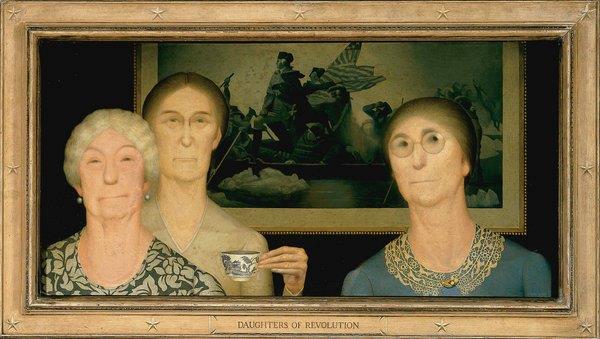Yesterday I attended the American Federation of Arts’s panel titled “Art Museum Blockbusters: Myths, Facts, and Their Future.” But I don’t want to talk about blockbusters here, at least not today. I’m going to zero in on some comments made by one of the panelists, Aaron Betsky, director (for now) of the Cincinnati Art Museum (none of them are related to blockbusters, as the session wandered away from its original purpose at various times).
 I”m singling out Betsky not because of the recent news, or because of what he has done in the past, which I’ve both praised and panned here, but because he said a lot of interesting things yesterday that I’d like to share, comment on, and agree or disagree (with my thumb).
I”m singling out Betsky not because of the recent news, or because of what he has done in the past, which I’ve both praised and panned here, but because he said a lot of interesting things yesterday that I’d like to share, comment on, and agree or disagree (with my thumb).
- The Cincinnati Museum used to be free, except for special exhibitions — a not uncommon practice. But, Betsky said, no one went to the special exhibitions — in contrast with most museum patterns. So he made everything inside the museum free, and began to charge for parking ($4). Seems like a fine idea to me, without repercussions for the museum or art-viewing. Can other museums that charge for special exhibitions learn something? Thumbs up.
- During lean times, Betsky slashed the exhibition budget by 50%, and asked curators to do shows costing about $200,000 or occasionally $300,000. He reasoned that “how you get people in the door” is by programming and social activity and so “that’s where you spend your money, not on the shows.” Take a look yourself at the results. Then notice that the list does not include “The Amazing American Circus Poster,” Feb. 26-July 10, 2011, or Wedded Perfection: Two Centuries of Wedding Gowns in 2010. I wonder why not. Thumbs down.
- The Cincinnati Museum has what Betsky called Grant Wood’s second most important painting, Daughters of the Revolution (shown here). He recently called Douglas Druick, director of the Art Institute of Chicago, which owns Wood’s best painting, American Gothic, to propose a share. The two-painting exhibition (there may be additional, related material, I’m not sure) will go on view in both museums. How many times have I written here, and elsewhere, praising these small, focused shows? Thumbs up.
- Betsky said the wall labels for an exhibition should not say “this is the most important artist” or “one of the most important artists” or usue whatever workings — he criticized MoMA, where the panel took place, and said the Cincinnati museum did it too. Why not? It’s not a museum’s place to make a judgment like that. He says museums can use words like “most influential,” which can be demonstrated. Glenn Lowry, MoMA’s director, strenuously objected, saying that museum should not have to remain neutral on an artist, and I agree, strongly. Betsky himself said that meta-studies show that the first reason people visit museums is to learn something. A museum can assert whatever it wants, and those who want to agree can agree, and those not, not. Either way, they are learning. They may even learn more if they disagree than if they agree. Thumbs down.
Interestingly, Betsky — I believe, from my notes, but will await the video from AFA — used the words “second most important” for that Grant Wood painting!
Photo Credit: Courtesy of the Cincinnati Art Museum
